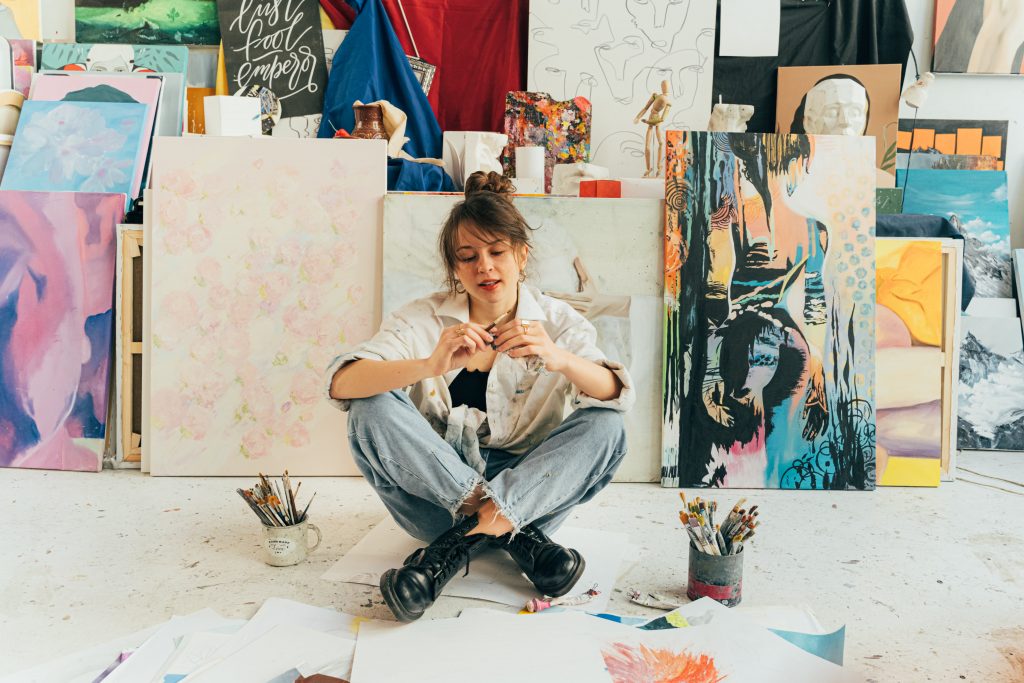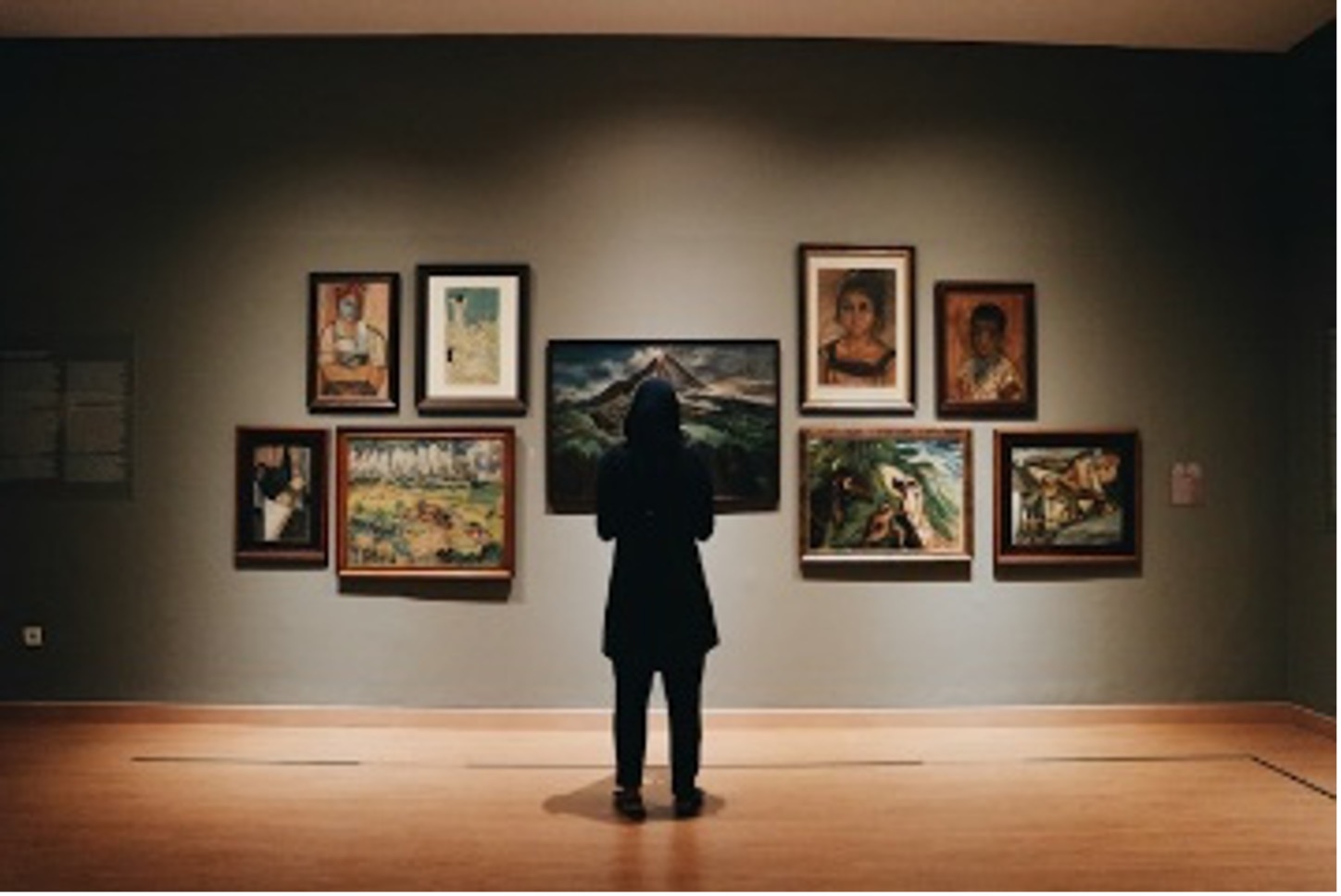Mindful art consumption is a significant shift that’s redefining the industry. As collectors and art enthusiasts become more conscious of their choices, they influence everything from artistic creation to market dynamics. This movement towards mindful collecting is shaping a new narrative in art. Here, each piece holds a story, a purpose, or a message that resonates deeply with its audience. So, let’s explore how this mindful approach to art is transforming the way we engage with creativity.
The Rise of Mindful Art Consumption
The trend of mindful art consumption is rapidly gaining momentum, reflecting a deeper, more thoughtful approach to collecting art. This motion is driven by a growing awareness among collectors of their impact on the art world and society at large. They are now seeking pieces that appeal aesthetically and resonate with their values and beliefs.

This conscious collecting is further influenced by technology and social media. They offer unprecedented access to diverse artworks and artists, enabling collectors to make more informed and intentional choices. The result is a more engaged and discerning art audience, shaping a market that values depth and meaning over mere possession.
Artists and Galleries in the Age of Awareness
In response to this evolving landscape, artists and galleries are adapting in dynamic ways. Here’s how they’re responding to this growing trend:
- Artists focus on themes that reflect social, environmental, or political issues, attracting collectors who value substance.
- Galleries emphasize the stories behind the artworks and artists. This way, they are creating a deeper connection with potential buyers.
- The market strategy has experienced significant change. It has shifted towards showcasing diverse, underrepresented artists to meet the demand for unique, culturally significant works.
This change in focus aligns with the idea that galleries adapt to conscious collecting, offering art that not only captivates visually but also engages on an intellectual and emotional level. As a result, the art world is witnessing a significant transformation. This movement is setting new standards in the industry. It’s paving the way for a future where everyone values art for its ability to inspire, educate, and provoke thought.
Art in the Echoes of Society
In contemporary culture, art mirrors and shapes societal narratives. This goes beyond mere visual appeal. Nowadays, many artists actively engage with and comment on pressing social, political, and environmental issues. Their creations are powerful conduits for dialogue and change, often sparking deep reflections and discussions among audiences.
Art in this context becomes a dynamic participant in societal discourse, offering insights and challenging perceptions. It’s not just about creating beauty. More importantly, it’s about the artists’ role in society, where they use their craft to amplify voices, highlight causes, and sometimes provoke necessary conversations. This transformative power of art makes it an essential element in understanding and navigating the complexities of our world, bridging aesthetics with impactful social commentary.
Technology: The New Brushstroke
Technology is revolutionizing creativity in the modern art world. Artists are gradually using digital tools, like Photoshop and Procreate, to design and refine their concepts before traditional execution. 3D printing is another game-changer, enabling sculptors to create intricate designs that were previously impossible.

This blend of art and technology expands creative possibilities and aligns with conscious art consumption. It enhances how artists express themselves and offer collectors new, immersive ways to experience art. As technology evolves, it becomes a vital part of the artistic process. It’s inviting both artists and audiences to explore and engage with art in innovative ways.
The Global Canvas: Economic and Market Impacts
The trend of mindful art collecting is significantly influencing the global art market. It embodies a change that goes way beyond personal preferences to affect economic realities. This phenomenon is evident in the rising demand for artworks that display cultural and social significance, consequently altering their market value. Recent data suggests a notable increase in the valuation of artworks that address topical issues. This is also true for art created by underrepresented groups, reflecting global trends that influence art collections.
This shift is also impacting art fairs and galleries, with many now prioritizing diversity and inclusivity in their showcases. Such changes are reshaping investment patterns in the art world as collectors seek pieces with both aesthetic appeal and meaningful narratives. This evolution in collecting habits is not just a cultural evolution but an economic one. It’s signaling a new era in the art industry where value is increasingly measured by relevance and impact.
Trending Now: Purpose-Driven Collections
What’s trending in the world of conscious collecting? It’s all about purpose and passion. Collectors are gravitating towards works that have a story, a heritage, or a message. Be it eco-conscious art, pieces by underrepresented artists, or works that challenge societal norms, the current trends are all about collecting with intent.
What the Future Holds
With all this in mind, the art industry is poised for continued evolution, influenced by the changing dynamics of art collection and appreciation. This forward movement is more than a trend; it’s a fundamental switch in how we interact with and perceive art. Future collectors are expected to further emphasize the significance of storytelling, cultural representation, and social impact in their acquisitions.

Additionally, technology will play an even larger role in the discovery and purchase of art and its creation and presentation. Augmented and virtual reality could bring new dimensions to art, offering immersive experiences that challenge traditional boundaries. This progressive outlook promises a diverse and enriching future for the art world, where innovation and consciousness work together.
Art for Thought: Embracing Mindful Art Consumption
As we embrace mindful art consumption, we’re not just collecting art; we’re curating experiences and stories that resonate with our deepest values. This journey of conscious collecting is about more than just owning a piece of art; it’s about being part of a larger narrative, one that values authenticity, responsibility, and the transformative power of creativity.
______________________________________
Author’s bio:
Vlad Iglin is a vital member of the marketing team at Royal Moving and Storage California, which is renowned for its reliable and efficient moving services. His innovative strategies and dedication to customer satisfaction have been key to enhancing the company’s profile as a trusted leader in the moving industry. His work promotes the company’s services and ensures a positive and seamless experience for every client.


